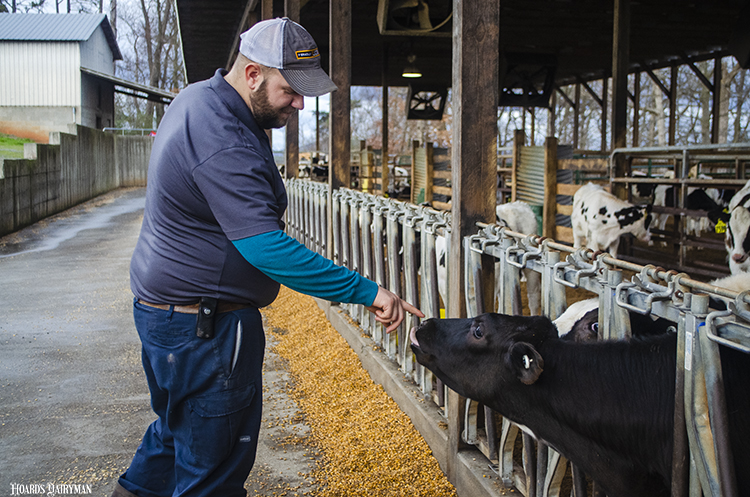
As humans, we find companionship with animals. This comes in the form of pets in our homes, wildlife we observe, and the livestock we work with on farms.
Human-animal interactions can affect an animal’s fear response of humans, Edwards-Callaway explained. The impacts of negative interactions can lead to short term challenges, such as difficult handling or undesirable changes in behavior. Long term, negative interactions can lead to lower milk production, a slower growth rate, a reduced pregnancy rate, and more.
For these reasons, Edwards-Callaway said we want to avoid negative interactions with animals. Neutral interactions are fine, but the goal should be to encourage positive relationships by promoting positive interactions between animals and caretakers.
Edwards-Callaway shared some mechanisms that can help animals establish positive perceptions of humans. The first is habituation.
“If we think about how animals respond to unfamiliar things, usually there’s some fear,” she said. “Habituation is a reduction in fear response resulting from repeated exposure.”
Classical conditioning is helping animals associate human presence to something positive. A few ideas are gentle stroking, calm movement, low stress handling, or sometimes a reward. “We need to be creative in what that looks like,” Edwards-Callaway noted.
She also referred to social learning, which is the understanding that animals are learning from us even if we are not directly interacting with them. There is also the concept of generalization, where animals generalize what they learn from certain interactions, both good and bad.
“We need to make any interaction count positively,” she said, “by increasing exposure to positive interactions and decreasing occurrences of negative interactions for all animals and in all locations.”
One way to do this is through low stress handling, a practice that is already widely done and accepted. This includes reducing noise and avoiding abrupt movements. Edwards-Callaway advised being patient with animals and utilizing the flight zone when moving animals. She also encouraged working with appropriately sized groups of animals.
“With continual exposure to low stress and positive interactions, an animal will become less fearful,” she noted, which leads to more positive interactions. She added that it’s important that people have the right tools and enough time to handle animals appropriately. “We can’t be low stress if we don’t have time to get the work done,” she said.
Another way to improve our human and animal interactions is to add enrichment to the environment where animals live. Edwards-Callaway said that environmental or behavioral enrichment is the process of manipulating an animal’s environment to increase physical activity and normal species typical behavior that satisfies the animal’s physical and psychological needs. A brush in a dairy cows’ pen is an example of this.
Edwards-Callaway said there is still a lot we don’t know about human and animal interactions, from what is the right amount of interaction to what interactions are most rewarding. We are also still learning how to assess animal responses to humans and what benefits people.
To learn more, watch the June Hoard’s Dairyman webinar, “Human and animal interactions: Impacts on cows and caretakers.” This webinar was sponsored by the Dairy Cattle Welfare Council.








